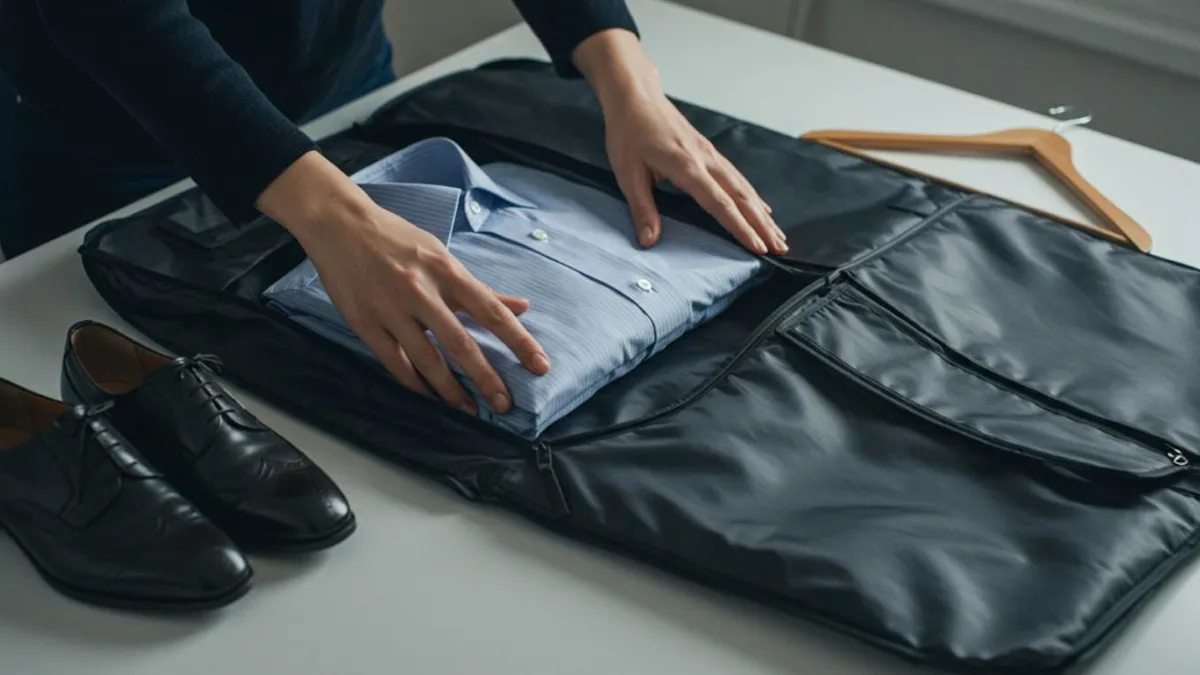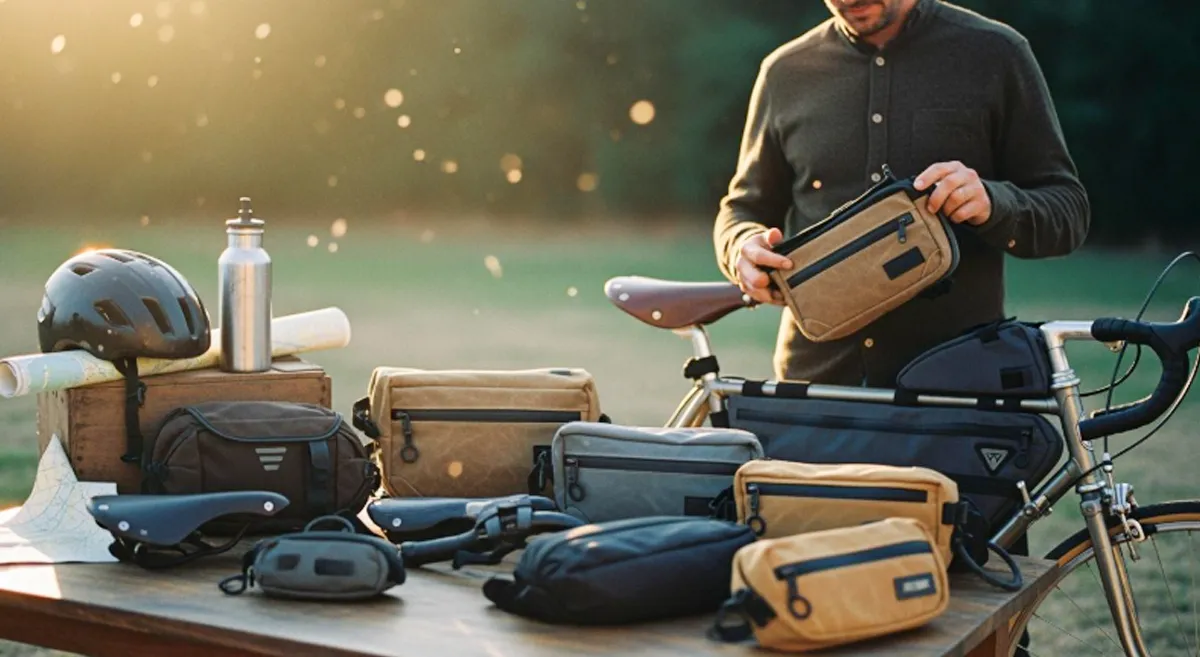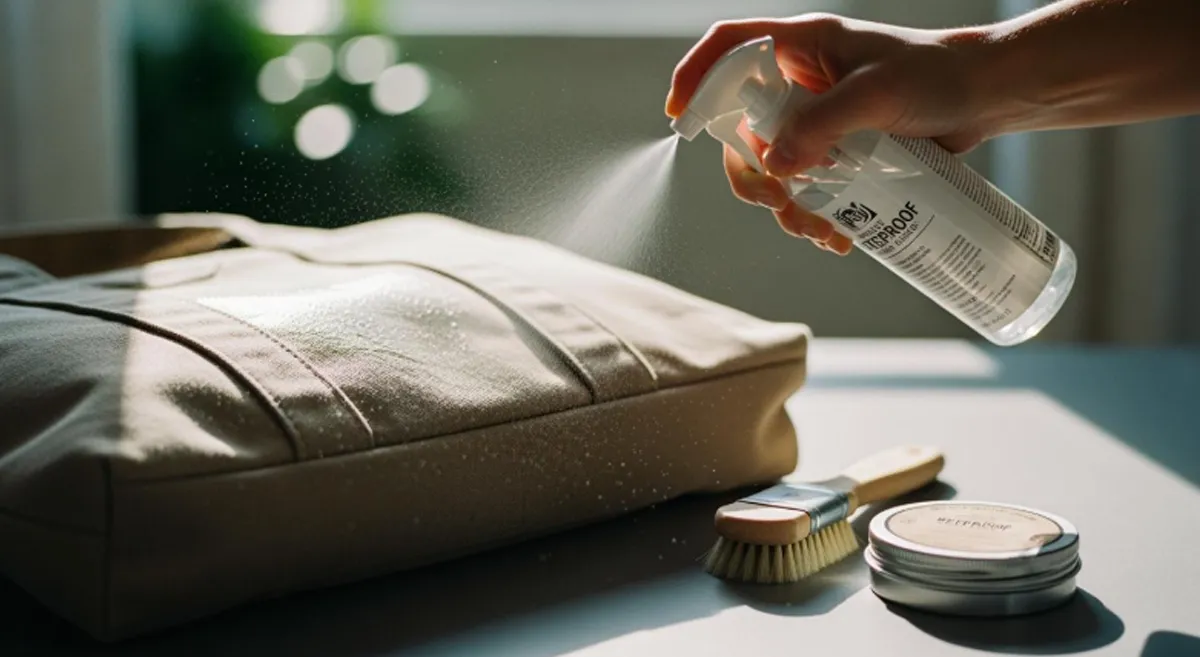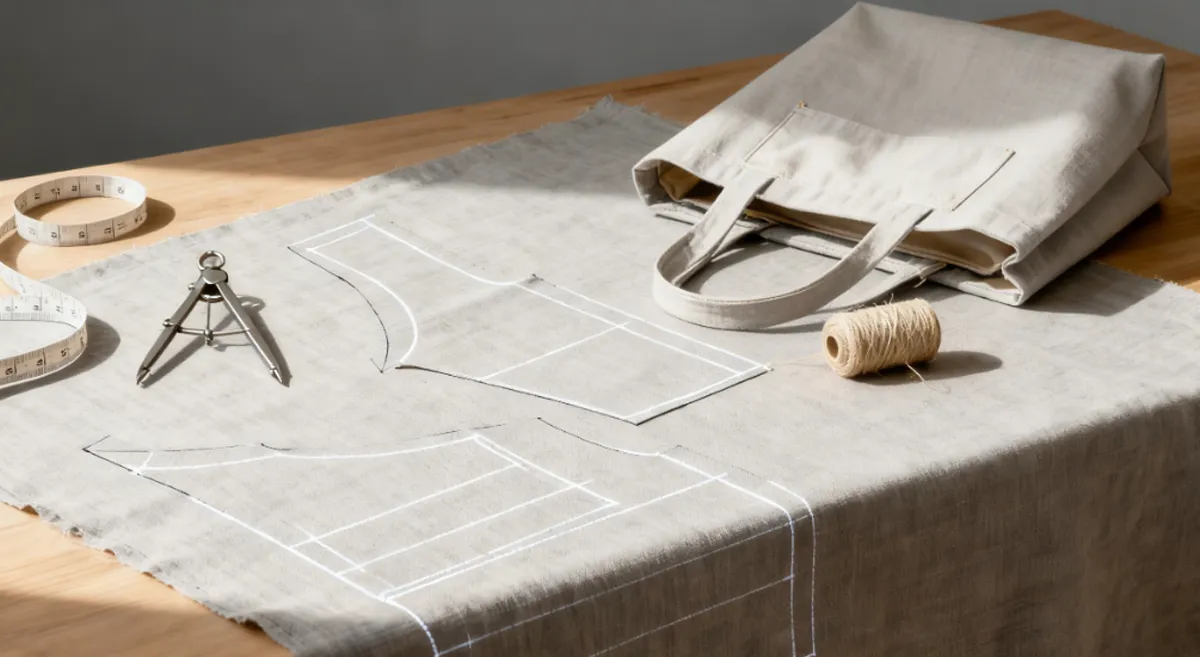If you want your clothes to stay neat when you travel, knowing how to use a garment bag helps a lot. You put your clean clothes inside. Use the pockets for shoes or other things. Zip it up so you can carry it easily. With a Garment Bag, your clothes do not get wrinkled. You pack better and move quickly in airports. Follow these steps to make your trip easier and keep your suits or dresses looking nice.
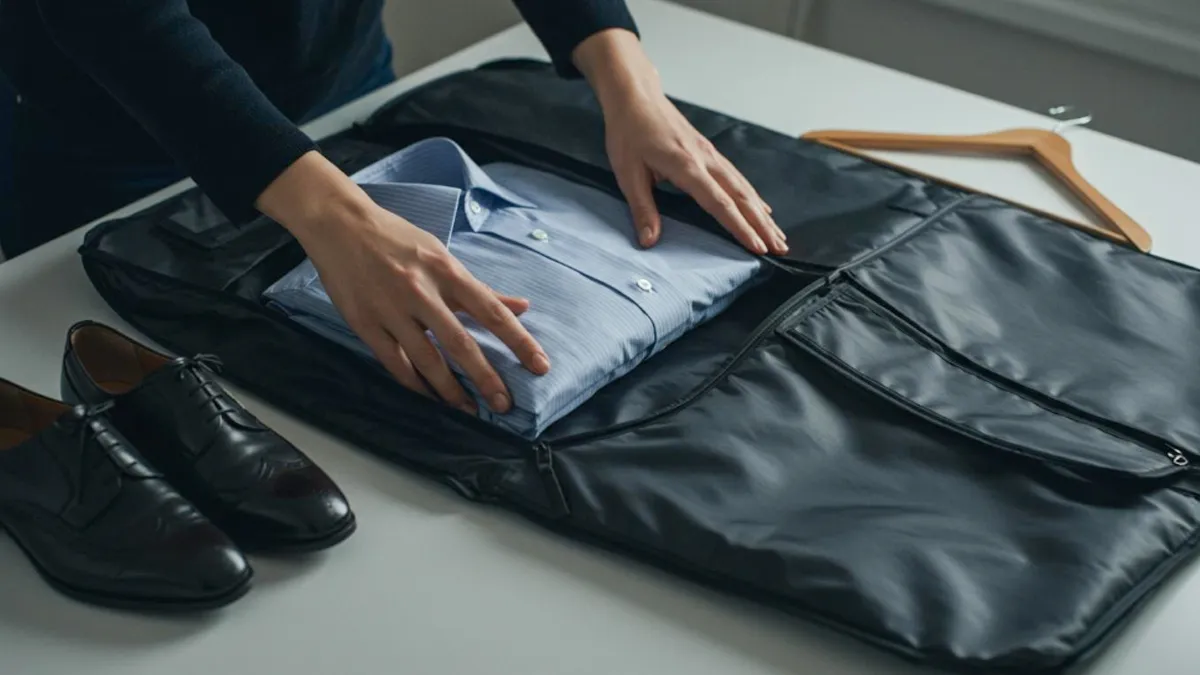
Key Takeaways
- A garment bag helps your clothes stay neat and smooth when you travel.
- Pick a bag with strong zippers and handles so it is easy to carry and lasts longer.
- Put tissue paper between delicate fabrics to stop them from getting creased.
- Only pack what you really need to save space and keep the bag light.
- Put heavier things at the bottom and lighter things on top to keep the bag balanced.
- Always check the airline’s size rules so you do not get surprised at the airport.
- When you arrive, unpack and hang your clothes right away to stop wrinkles.
- Clean and check your garment bag often so it will last a long time.
Garment Bag Basics
What Is a Garment Bag
A garment bag is designed to keep clothes neat and protected. Use it for suits, dresses, or uniforms—ideal for business trips and formal events. A garment bag—also called a garment cover, suit bag, gown bag, or dust cover—helps prevent wrinkles and damage. Hang your clothes inside and zip it closed; it’s easy to carry. We manufacture garment bags and offer OEM/ODM options, so you can choose the size, materials, and logo that fit your store.
Tip: To keep clothes looking nice, pick a garment bag with a strong zipper and soft handle.
Here are the main features travel experts suggest:
| Feature | Description |
|---|---|
| Capacity | Holds many suits or jackets and keeps them smooth. |
| Material | Made from strong ballistic nylon with Duraguard for long use. |
| Pockets | Has big outside pockets for shoes, ties, and small items. |
| Wrinkle Prevention | Foam roll bar and straps help stop wrinkles. |
| Mobility | Rolling bags have good wheels for easy moving. |
| Stability | Four-point system keeps the bag from tipping over. |
| Handle | Extension handle helps you pull the bag without shaking. |
| Additional Storage | Corner pockets hold small things like belts and socks. |
| Design | Bi-fold style with padded strap and leather handle. |
| Testing | Bags are tested to make sure they last and do not tear. |
Benefits
Using a garment bag gives you many good things:
- Your clothes stay smooth, even after long trips.
- You can keep outfits, shoes, and extras together.
- Delicate fabrics are safe from dust, water, and harm.
- You save time at airports and do not need to check more bags.
- You look professional with clean, pressed clothes.
If you own a business or store, custom garment bags with your logo can help your brand. You can ask for samples, pick materials, and order small amounts.
Types
There are different kinds of garment bags. Each one has its own use. This table helps you compare:
| Garment Bag Type | Functionality Description |
|---|---|
| Classic Carry-on Suit Bags | Light and easy to carry. Good for work trips. Protects suits and has handles and ID spots. |
| Rolling Garment Bags | Mixes suitcase and garment bag. Stops wrinkles and has wheels for easy rolling. |
| Foldable Travel Garment Bags | Small and light. Good for short trips and has pockets for extras. |
| Luxury Canvas or Vegan Leather Bags | Looks fancy and feels nice. Used for gifts or special events. |
Choose the type that matches your travel or business needs. If you want a custom suit bag or garment dust cover, we can produce it with the features and look you want.
Note: New features like roll bars and stability systems make today’s garment bags better for travel and storage.
Choosing Your Garment Bag
Picking the right garment bag makes travel smoother and keeps your clothes looking sharp. Whether you are on a business trip or a weekend away, choose a garment or suit bag that fits your needs. Here is what to look for:
Size
You need to match the bag size to your trip. For short trips, a compact gown bag works well. If you travel for business and need to carry suits or formal wear, choose a dustproof garment bag with more space. Here are some things to consider:
- What type of travel do you do most? Business trips often need bigger bags for suits.
- How long is your trip? Longer trips mean you need more room.
- Does the bag have built-in compartments for suits or dresses?
- Will the bag fit airline carry-on rules?
When you pick a garment bag, make sure it has enough space for hanging garments and extra items like shoes or accessories. Expandable sections and extra pockets help you stay organized.
Tip: Always check airline size restrictions before you buy. You don’t want surprises at the airport!
Material
Material matters for both durability and protection. You want your clothes safe from spills and rough handling. Here’s a quick look at how different materials help:
| Feature | Impact on Durability and Protection |
|---|---|
| Breathability | Keeps air moving, stops moisture buildup. |
| Moisture Resistance | Shields clothes from spills and dampness. |
| Sturdiness | Handles wear and tear during travel. |
A dustproof garment bag made from water-repellent fabric keeps your clothes dry and fresh. If you care about the environment, compostable garment bags break down quickly and help reduce pollution. Some bags use recycled materials or FSC™-certified paper for added sustainability.
Note: Sturdy construction means your bag lasts longer and protects your clothes trip after trip.
Features
The right features make packing and carrying easier. Let’s look at what matters most:
Handles
Strong handles help you carry your garment bag comfortably. Padded or leather handles feel good in your hand and last longer. If you travel a lot, look for handles that won’t wear out quickly.
Compartments
Extra compartments keep your outfits, shoes, and accessories organized. Shoe pockets and small sections for ties or belts save space and prevent wrinkles. You can pack more without making a mess.
Zippers
Reliable zippers keep everything secure. Choose a bag with smooth, sturdy zippers that won’t snag or break. Double zippers add convenience, letting you open the bag from either end.
| Feature | Description |
|---|---|
| Materials | Leather, canvas, or recycled options for durability and style. |
| Organization | Shoe pockets and extra storage for accessories. |
| Capacity | Enough room for multiple garments and extra items. |
| Warranty | Look for bags with long warranties for peace of mind. |
If you run a store or brand, you can order custom garment bags with your logo, special materials, and unique features. Our OEM/ODM service lets you choose the size, compartments, and even the zipper style. We offer samples and low minimum orders, so you can test what works best for your customers.
Tip: A well-chosen garment bag keeps your clothes neat and your travel stress-free. Pick the features that fit your routine and style!
Preparing Clothes
Washing and Ironing
You want your clothes to look sharp when you arrive. Start by washing and ironing everything before you pack. Clean clothes stay fresh longer and smell better. Ironing helps remove wrinkles and gives your outfits a crisp look. If you skip this step, you might find creases that are hard to fix later. Use a gentle detergent for delicate fabrics. Hang each item right after ironing so it keeps its shape. This simple routine makes a big difference in how your suit, dress, or uniform looks after travel.
Tip: Always let your clothes cool down after ironing. Warm fabric can wrinkle fast if you fold it too soon.
Using Tissue Paper
Tissue paper is your secret weapon for keeping clothes smooth inside your garment bag. You can use it to protect jackets, pants, and shirts from friction and creasing. Here’s how you do it:
- Place a sheet of tissue paper on top of your jacket. This stops friction and helps prevent wrinkles.
- Roll the jacket carefully from the bottom up. Keep it tight, but not too tight. The tissue paper keeps the fabric smooth.
- Lay trousers flat. Fold them in half lengthwise. Roll them with another sheet of tissue paper inside. This reduces wrinkles even more.
Stuffing the arms and legs of your garments with tissue paper helps them keep their shape. You can also use tissue paper between layers if you pack more than one item. This simple trick works for 礼服袋, 西服袋, and 防尘袋. Your clothes will look fresh and ready to wear.
Note: Tissue paper is light and easy to find. It adds almost no weight to your bag.
Selecting Items
Stuffing the sleeves and pant legs of your garments with tissue paper helps them keep their shape. You can also place tissue paper between layers if you pack more than one item. This simple trick works for gown bags, suit bags, and dustproof garment bags. Your clothes will stay fresh and ready to wear.
| Item | Quantity | Placement |
|---|---|---|
| Suit Jacket & Pants | 1 set | Main hanging section |
| Dress Shirt | 2 | Middle layer with tissue |
| Ties | 2–3 | Mesh pocket |
| Shoes | 1 pair | Bottom compartment |
| Undergarments | 3 sets | Accessory pouch |
| Belt & Accessories | 1 set | Zipper side pocket |
Choose clothes that match your schedule. If you have meetings, pack a suit and extra shirts. For events, add a dress or formal wear. Use the compartments in your garment bag to keep everything organized. You can fit shoes, belts, and small items in the extra pockets. This method works for OEM/ODM garment bags, custom dustproof garment bags, and all types of travel bags we offer.
Packing only what you need keeps your bag light and your trip stress-free.
How to Use a Garment Bag
Packing your clothes the right way makes all the difference. If you want to learn how to use a garment bag and keep your outfits looking sharp, follow these easy steps. Whether you use a garment bag, suit bag, gown bag, or dustproof garment bag, these tips will help you travel wrinkle-free and organized.
Packing Steps
Folding Techniques
Start by choosing the right hanger for your suit or dress. Place your suit jacket and pants on the hanger. Make sure the pants hang along the pleats to keep their shape. Smooth out any wrinkles with your hands before you pack.
- Hang your suit or dress shirt inside the garment bag.
- Fold the bottom of the bag up over the top. This keeps everything compact.
- If you use a folding garment bag, snap or zip it closed for easy carrying.
Tip: Always fold clothes along the seams. This helps prevent new wrinkles from forming during travel.
You can also use the bundle method. Place a wrinkle-free item, like a t-shirt, in the center. Wrap your more delicate clothes around it. This keeps everything cushioned and less likely to crease.
Layering
Layering is key when you want to balance your bag and protect your clothes. Place heavier items, like shoes or thick sweaters, at the bottom of the bag. Lighter and more delicate fabrics should go on top. If you pack more than one suit or dress, use tissue paper between each layer. This stops friction and keeps fabrics smooth.
- Avoid overstuffing your garment bag. Clothes need space to breathe.
- Pack garments according to their shape and fabric type. Delicate items should never sit under heavy ones.
- Use packing cubes if your bag has extra space. These help organize and balance the weight.
Not sure how to use a garment bag for a business trip? Keep your most important outfit on top so you can grab it fast when you arrive.
Packing Accessories
Ties and Belts
Accessories can get lost or damaged if you do not pack them right. Use the small pockets inside your garment bag for ties and belts. Roll your ties gently and place them in a mesh or zippered pocket. Roll your belt and tuck it into a side compartment.
- Always pack ties and belts last. This keeps them from getting crushed.
- If your bag does not have special pockets, use a small pouch or zip bag.
Shoes
Shoes can add weight and take up space. Place them in the bottom compartment of your garment bag or in a separate shoe pouch. Make sure the soles do not touch your clothes. You can wrap shoes in a dust bag or plastic to keep everything clean.
- Put heavier shoes at the bottom to help balance the bag.
- Stuff socks inside your shoes to save space and help them keep their shape.
Securing Garments
Straps
Most garment bags come with built-in straps. Use these to hold your clothes in place. Fasten the straps over your hanging garments. This stops them from shifting during travel.
- Tighten the straps just enough to secure your clothes, but not so much that you crush them.
- If your bag has extra straps for shoes or accessories, use them to keep everything organized.
Zippers
A strong zipper keeps your bag closed and your clothes safe. Zip up your garment bag slowly to avoid catching fabric. Double-check that all compartments are zipped before you leave.
- Use double zippers if your bag has them. This lets you open the bag from either end.
- Make sure nothing sticks out before you zip up.
Note: If you want to know how to use a garment bag for best results, always check that your clothes are secure and your bag is balanced before you travel.
Common Mistakes to Avoid
- Do not overpack your garment bag. This causes deep wrinkles and makes it hard to close.
- Never fold heavier fabrics on top of delicate ones. This can damage your clothes.
- Avoid packing without a plan. Garments can rub together and lose their shape.
- Always consider the shape and fabric type of each item before packing.
| Mistake | How to Avoid It |
|---|---|
| Overpacking | Leave space for clothes to breathe |
| Wrong layering | Put heavy items at the bottom |
| Ignoring fabric type | Pack delicate items on top |
| Skipping straps/zippers | Always secure garments before travel |
If you follow these steps, you will master how to use a garment bag and keep your clothes looking fresh. Our company offers OEM/ODM garment bags with custom sizes, materials, and logo printing. You can request samples or low-MOQ orders for your brand or store. Choose a garment bag, suit bag, gown bag, or dustproof garment bag that fits your needs and travel with confidence.
Travel Tips
Maximizing Space
You want to make the most of every inch in your garment bag or suit bag. Start by choosing clothes that match your trip. Roll socks and tuck them inside shoes. Use every pocket for small items like ties, belts, or undergarments. If your dustproof garment bag has extra compartments, fill them with accessories or toiletries. Place heavier items at the bottom and layer lighter garments on top. This keeps your bag balanced and helps prevent wrinkles. Packing cubes or pouches can help you organize and separate items. You will save space and find things faster when you arrive.
Tip: Don’t overstuff your garment bag. Clothes need room to breathe, so leave a little space between layers.
Here’s a quick table to help you pack smart:
| Item | Best Placement | Space-Saving Tip |
|---|---|---|
| Shoes | Bottom compartment | Stuff with socks |
| Ties & Belts | Side pockets | Roll gently |
| Shirts | Middle layer | Fold along seams |
| Accessories | Small pouches | Use zip pockets |
Carry-On Advice
Most airlines allow you to use a garment bag as a carry-on. You can bring your garment bag or gown bag plus one personal item, such as a laptop case. The maximum size for a soft-sided garment bag is 51 inches (130 cm) in total when you add length, width, and height. Even if your bag is small, it still counts as a carry-on. This makes travel easier and keeps your clothes close at hand.
- Always check your airline’s rules before you fly.
- Use your dust cover bag as a carry-on for easy access and extra protection.
- Store your garment bag in the overhead bin or under the seat if it fits.
If you run a store or brand, offering custom-sized garment bags helps your customers meet airline rules. Our company provides OEM/ODM solutions, samples, and logo printing for all types of garment bags.
Note: You can bring a garment bag and a personal item, but not two carry-ons. Avoid unexpected fees by following airline guidelines.
Airport Security
Airport security can feel stressful, especially with a Suit bag or dust bag. Garment bags are carry-on luggage, not personal items. Sometimes gate agents get confused, so be ready to explain. If your bag is bulky, it might be hard to carry through busy terminals. You could face extra fees if you bring both a carry-on and a garment bag.
- Keep your garment bag light and easy to handle.
- Use the handles or shoulder strap for quick movement.
- Place your bag flat on the security belt for scanning.
If you want to know how to use a garment bag and avoid problems, pack only what you need and follow airport rules. Our OEM/ODM garment bags come in lightweight designs and custom sizes to help you move smoothly through security.
Traveling with a garment bag is simple when you plan ahead. You protect your clothes and save time at every step.
Unpacking and Care
Removing Clothes
You finally arrive at your destination. Now it’s time to unpack your Fashion bag or suit bag. Open your garment bag carefully. Unzip all compartments and check for small items like ties or belts. Take out your shoes first if you packed them at the bottom. This helps you avoid dirt on your clothes.
Next, remove your suits, dresses, or uniforms from the main section. Hold each item by the hanger and lift it out gently. Try not to tug or pull. If you used tissue paper, take it out and smooth the fabric with your hands. This simple step helps your clothes look fresh and ready to wear.
Tip: Unpack your dust-proof bag as soon as you arrive. The sooner you hang your garments, the fewer wrinkles you’ll see.
Hanging Garments
Hang your clothes right away. Use a sturdy hanger for each item. Place your suits, dresses, or shirts on a rack or in a closet. Give each piece enough space so air can move around it. This helps wrinkles fall out and keeps fabrics smelling clean.
If you notice any creases, use your hands to smooth them. For stubborn wrinkles, hang your clothes in the bathroom while you take a hot shower. The steam will help relax the fabric. Avoid using a hot iron unless you really need to. Some fabrics can get damaged by too much heat.
Here’s a quick checklist for hanging your garments:
- Hang each item as soon as possible.
- Leave space between clothes for airflow.
- Use the right hanger for each garment.
- Let clothes rest before wearing them.
Hanging your clothes right away keeps you looking sharp for meetings or events.
Cleaning the Bag
Taking care of your garment bag means it will last longer and protect your clothes better. Start by emptying all pockets and shaking out any dust or crumbs. Wipe the inside and outside with a damp cloth. For tough spots, use a mild soap and water. Always follow the care instructions from the manufacturer, especially if your bag is made from special materials.
To keep your clothing bag or formal dress bag in top condition:
- Store your garment bag in a cool, dry place away from sunlight. Sunlight can damage the material over time.
- Use a breathable bag, like cotton, for long-term storage. This stops mold and mildew from forming.
- Avoid plastic bags. They trap moisture and can harm both the bag and your clothes.
- Clean your bag regularly to remove dirt and soap residue.
- Check your bag often for signs of wear. Fix small problems early to avoid bigger issues later.
| Care Step | Why It Matters |
|---|---|
| Store in cool, dry place | Prevents material damage |
| Use breathable bags | Stops mold and mildew |
| Clean regularly | Keeps bag effective and fresh |
| Inspect for wear | Allows for timely repairs |
If you run a business or store, keeping your OEM/ODM garment bags clean and well stored shows customers you care about quality. You can also request custom dustproof garment bags with easy-clean materials and your logo for a professional touch.
Note: A little care goes a long way. Your garment bag will protect your clothes trip after trip if you look after it.
Conclusion
You now know how to use a garment bag for smooth, organized travel. Here are the steps travel pros recommend:
- Lay your suit flat and smooth out wrinkles.
- Fold your jacket and trousers gently.
- Hang your garments inside the garment bag or suit bag.
- Pack accessories in extra pockets.
- Add tissue paper for extra wrinkle protection.
Garment bags let you hang clothes, keep formal wear crisp, and avoid checked luggage fees. You look professional and stay organized every trip.
Try these tips: choose wrinkle-resistant fabrics, use a quality dustproof garment bag, and unpack right away. Ready to upgrade your brand’s travel gear? Partner with our factory for OEM/ODM garment bags—sampling, fast quotes, and quick delivery. We help supermarkets, distributors, and brands create custom solutions.
FAQ
How do I choose the right garment bag for my business?
Start with who will use it and where: retail customers storing suits at home, or travelers carrying outfits through airports. Match length and capacity to the garment (suit vs. evening gown), then pick materials for the job—breathable nonwoven or cotton for storage, water-resistant polyester or nylon for travel. Look for full-length two-way zippers, interior hold-down straps, hanger openings, and options like shoe or accessory pockets, clear ID windows, and trolley sleeves. We support OEM/ODM customization, including size, color, structure, and branding to fit your line.
Can I order custom garment bags with my logo?
Yes. We produce custom suit bags, gown bags, and dustproof garment bags with your artwork. Choose printing methods such as screen print, heat transfer, or digital print with Pantone color matching. Customize fabric, thickness, trim, zipper style, windows, vents, and packaging. We offer sampling and flexible MOQs, so you can validate fit and finish before bulk production.
What is the best way to pack a suit in a garment bag?
Use a wide-shoulder hanger and button the jacket to hold shape. Fold trousers along the crease and place tissue paper in shoulders, sleeves, and between layers to reduce friction. Secure the outfit with the internal straps, keep heavier items low, and avoid overfilling. Zip smoothly, then hang and air out the suit as soon as you arrive.
Are garment bags allowed as carry-on luggage?
Most airlines allow a soft-sided garment bag as a carry-on, often alongside one personal item. A bi-fold or tri-fold design typically fits overhead bins more easily. Policies vary by carrier, so always check your airline’s current size and weight rules before traveling to avoid gate-check surprises.
How can I keep clothes wrinkle-free during travel?
Layer tissue paper between garments, pad shoulders and sleeves, and do not overpack. Use the bag’s compression straps to prevent shifting. On arrival, hang items immediately; a brief steam or shower-steam refresh helps relax minor creases. Choosing wrinkle-resistant fabrics also makes a noticeable difference.
What materials are best for garment bags?
For travel, choose polyester or nylon with a water-repellent finish for durability and weather resistance. For breathable long-term storage, pick nonwoven polypropylene or cotton. Transparent PEVA windows help with quick identification, while recycled or compostable options support sustainability goals. We can advise on fabric weight, coatings, and hardware based on your use case and budget.
Can I get samples before placing a large order?
Absolutely. We offer material swatch packs, plain prototype samples, and pre-production printed samples. Share your dimensions, material preference, features, artwork, and target quantity, and we will prepare samples so you can test quality, fit, and branding before confirming bulk.
How do I clean and store my garment bag?
Wipe the exterior with a damp cloth and mild detergent; for fabric bags, follow the care label and air-dry fully before storage. Keep the bag in a cool, dry place away from direct sunlight, and avoid sealing damp items inside. For long-term storage, add a dehumidifier sachet or cedar block, and periodically open the zipper to allow airflow.

